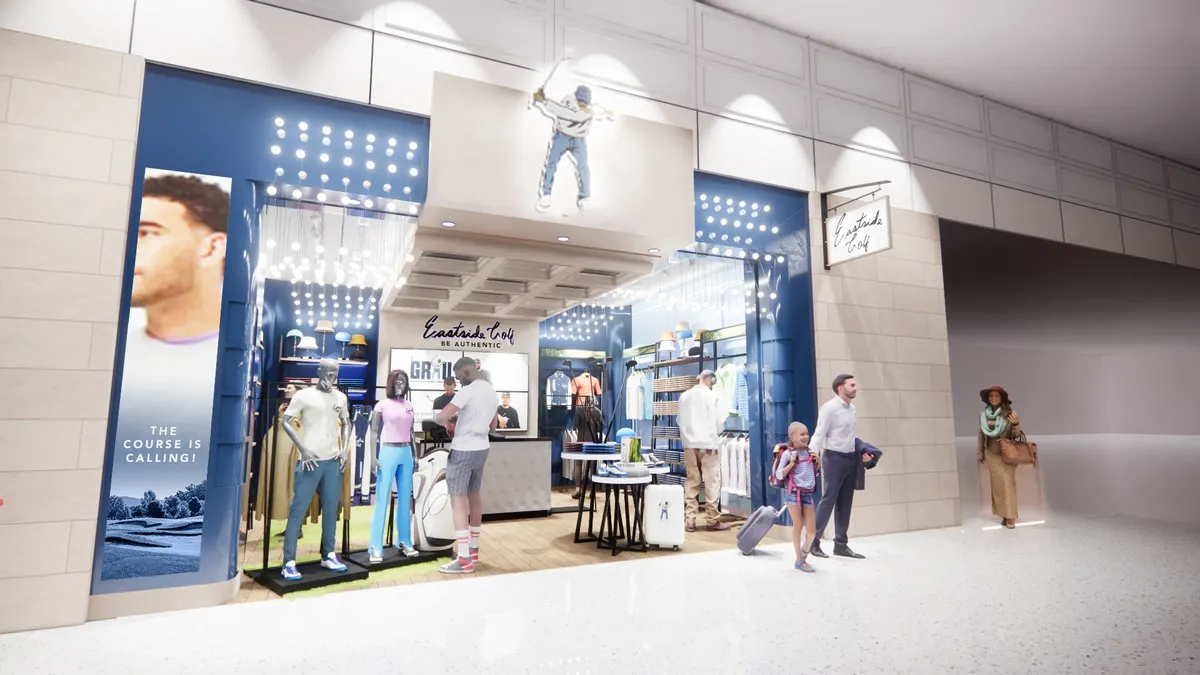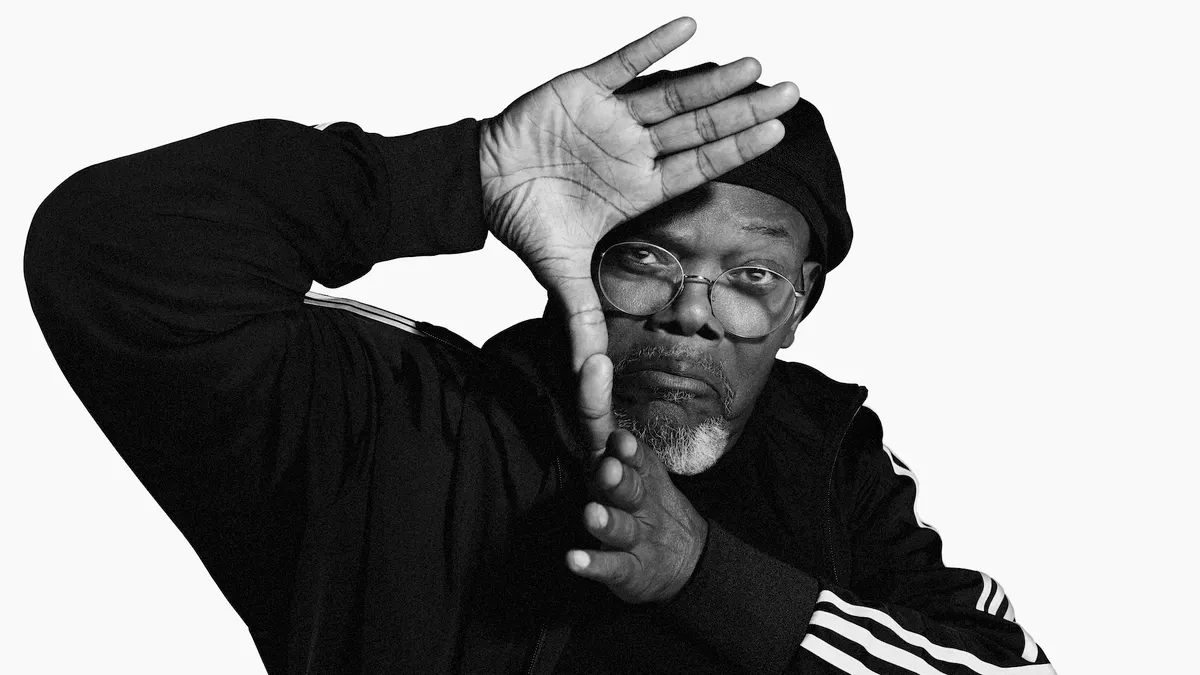Mack Weldon CEO Brian Berger thinks of the pandemic in three stages: triage, the new normal and the steady state.
Not every retailer's path through the pandemic is the same, but just about every business can identify with the first of those stages, when U.S. retailers closed their doors in rapid succession, made tough decisions on employee furloughs and layoffs, and struggled for breathing room on rent and other costs.
Berger also pointed to the difficulties of switching to a remote work environment and keeping employees motivated as the world changed around them. Then came the new normal, when Berger realized that the men's basics business was going to be OK, and that in fact, many of its product categories were now well positioned, including sweats and T-shirts.
"The new normal was really adjusting to that and figuring out, 'What are the opportunities? How can we capitalize on this? How can we accelerate our business?' and there's a lot of things that we did during that time," Berger said. Among them, the retailer launched a mask, going from concept to commercialization in 90 days (and selling several hundreds of thousands of them), and tested out new advertising channels.
Now, Berger thinks of Mack Weldon as being in the third and final stage he's identified (so far): the steady state. There's increased demand for Mack Weldon's products and the retailer has a handle on its operations, so now Berger is tackling questions like: Should anything change in the company's long-term strategy? What does the future look like?
"This period has really showcased what is unique and differentiated about digital-first brands specifically and sort of the categories that we operate in, like consumer apparel, and what makes our business special vis-a-vis a more traditional type of branded retail approach," Berger said. "And those are things like: not having gigantic retail exposure, because even in good times, you have stores that do well and you have stores that do poorly; having centralized inventory, so that you don't have to make silly decisions around pricing and promotion that drive near-term opportunities but ultimately dilute your brand and really take things down to the lowest common denominator, which is price."
Berger also highlighted having immediate access to consumer data and being able to act on it in real time, as well as being able to engage with customers directly.
"Those are all things that are core characteristics of companies like ours that go well beyond the fact that we don't have stores and we largely drive our business through an array of digital marketing playbooks," Berger said. "These are all things that are real strategic differentiators for us and that I think have proven in many cases to be success stories over the last eight or so months, irrespective of category."
Triage
Mack Weldon didn't have a good first quarter. The company was sorting through some issues with its website and digital marketing, according to Berger.
It ended up being a blessing in disguise when Q2, and the pandemic, spiked demand and Mack Weldon was well primed with inventory. That, combined with its already flexible supply chain, helped the brand stay on top of orders in the early months of the pandemic.
"One of the unique attributes of our business is that we go narrow and deep into categories, we don't have a very broad assortment of product," Berger said. "Our whole business model is really oriented towards investing heavily in the hero product, so that we can capitalize on any market opportunities that we see. So we're always slightly over invested in our hero product categories."
Berger also purposefully focuses Mack Weldon in product categories where there's "not a whole lot of complexity" in fit, in order to keep return rates low and to lower the barrier for a consumer to make a purchase. Coincidentally, that meant Mack Weldon was well positioned for a global health crisis with its underwear, sweats and T-shirts-based assortment.
"The thing that's really been absolutely killing it is our Ace Sweatpants. Our bottoms business is up well over 100% year over year and showing no signs of abatement," Berger said. "I mean, we're chasing inventory, we're pulling purchase orders forward, doing everything possible with our supply chain to really capitalize on the demand that exists for sweats."
Sweatshirts, T-shirts and underwear products have seen double and triple digit growth this year as well, according to Berger.
Since nearly 100% of the company's revenue comes from its e-commerce site, Berger didn't have to worry much about the impacts on physical retail. Mack Weldon's store in Hudson Yards had to temporarily close down about a year after it opened in the center, but the company was able to shift staff to focus on other areas, like operations and e-commerce support, before it reopened around Labor Day.
"We're big believers in the opportunity there," Berger said of the Hudson Yards location, "but the opportunity there is really fed by local commercial traffic and tourism, and both of those things are still significantly constrained."
Steady state
When the pandemic first hit, Berger was focused on humanizing everything: the company's interactions with employees, with customers, its marketing. There were more frequent team meetings, with more checkups on how employees were feeling. The marketing shifted from touting how great Mack Weldon's products were to emphasizing why the brand was relevant during this time and tweaking the overall tone.
After the initial shifts, Berger took advantage of lower acquisition costs on Google and Facebook to invest more heavily in those marketing channels, and also test new ones. The company tested out TV for the first time, using repurposed customer service testimonials to throw together commercials, and has since scaled up the investment in that channel, doubling it in Q4.
"Not only were we able to essentially produce television-ready spots without ever having a new shoot, those assets in particular were very kind of on-tone," Berger said. "It's customers talking about their experience with our product in their homes or in their environments. So it just felt from a tone perspective like it was really on mark."
Physical expansion, on the other hand, was sidelined. Initial plans to build upon the success at Hudson Yards with a couple more physical retail locations were put on pause, though Berger said the brand has made significant progress in terms of what markets Mack Weldon wants to open in going forward and specific locations it has in mind.
"The strategy took a bit of a back burner, but we didn't lose ground," Berger said. To him, physical retail stores are still a viable revenue source for Mack Weldon in the future and help build the company's brand and support its e-commerce efforts.
"We're believers in it in a way that's kind of right-sized for us," Berger said. "Which is not a lot of stores and then really thoughtfully executed locations where there's a high degree of customer overlap and a lot of physical density so that we're able to capitalize on that convenience factor."
Limited flagships in key markets is how Berger characterizes the opportunity, though reaching an international base is now top of mind for Berger as well, after the DTC brand re-platformed its site to Shopify. Australia, New Zealand, the U.K. and Western Europe are possible expansion points.
After a turbulent year made solid by relying on sweats and T-shirts, perhaps the space least likely to change is the brand's assortment, according to Berger.
"We're all about doing as little as possible in terms of broadening the assortment."























